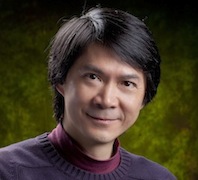Jun-Yi Leu

Affiliations
Institute of Molecular Biology, Academia Sinica
Biography
Jun-Yi Leu is currently a Research Fellow in Institute of Molecular Biology at Academia Sinica. He studied his PhD at Yale University and then did his postdoctoral research at Harvard University. Jun-Yi joined Academia Sinica in 2006 and was promoted as full research fellow in 2013.
Jun-Yi’s lab is interested in the general principles of evolutionary adaptation and the underlying molecular mechanisms. By combining experimental evolution, population analysis and comparative genomics, he dissected the molecular mechanisms involved in local population adaptation, reproductive isolation leading to speciation and the distribution of spontaneous mutations shaping genome architectures. More recently, he initiated projects related to cell ageing and phenotypic robustness. In the past few years, Jun-Yi has received Young Investigators Award from Human Frontier Science Program, Outstanding Research Award from Taiwan National Science Council and Junior Investigators Award from Academia Sinica.
Abstract
Protein Translocation in Quiescent Cells: What Can We Learn from Yeast about Aging.
Jun-Yi Leu
Modern human societies are facing many problems caused by population aging. A thorough understanding of physiological and genetic bases of the aging process is critical for developing medical treatments to deal with this issue. The budding yeast provides a useful model system for aging research. In our previous studies, we observed that many proteins relocalize and form reversible cytoplasmic granules in chronologically aged (quiescent) yeast cells. Mutations in the granule components reduce viability of the aged cells. Protein translocation is an important strategy for cells to regulate protein functions.
To understand the complete composition and function of these granules, we perform a systematic genome-wide analysis of protein translocalization in quiescent cells using the yeast GFP collection. We find that 300 GFP-tagged proteins form granule structures in quiescent cells. By examining colocalization patterns between these proteins and markers of different cytoplasmic granules, we discover many new members in Hsp42 stationary-phase granules, actin bodies, proteasome storage granules, and processing bodies. Some of the granules share overlapping components, suggesting that distinct granules interact with each other. Besides, the granules are dynamic and able to respond to other environmental stresses. Finally, we observe novel reversible cytoplasmic granules which do not colocalize with any known granule.

